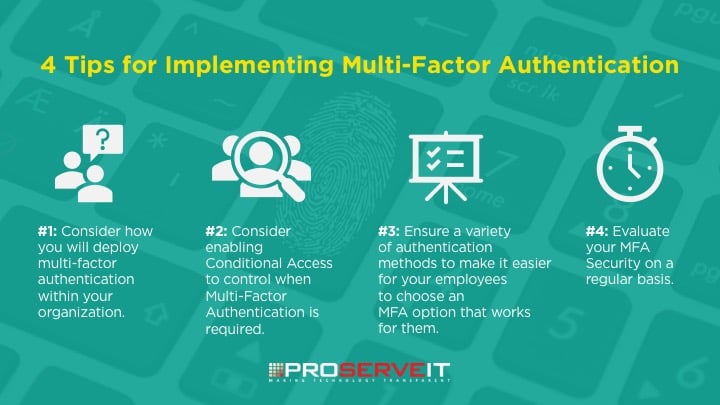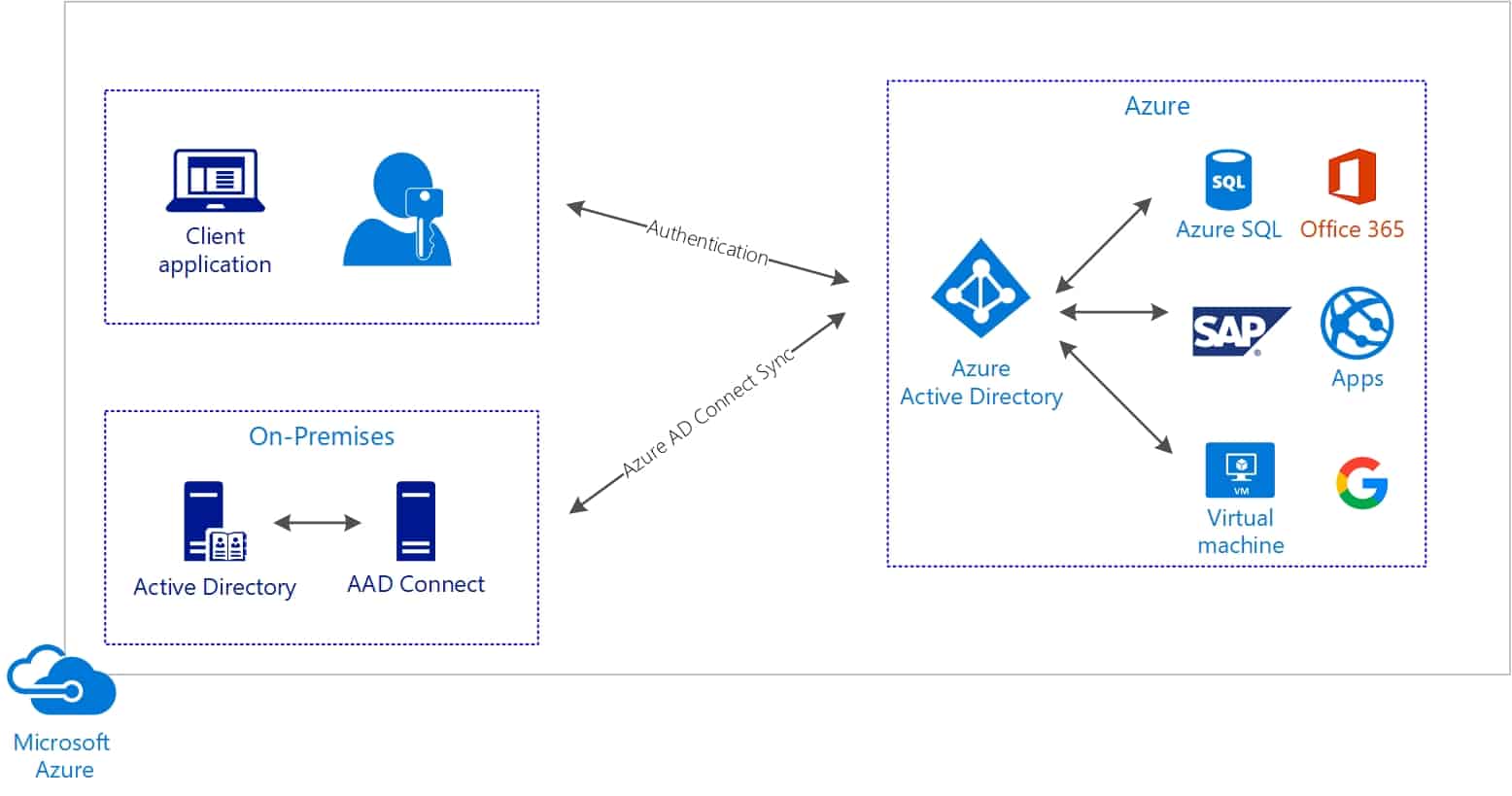Understanding MFA Server Azure: An Overview
Microsoft’s Multi-Factor Authentication (MFA) Server is a robust security tool that adds an extra layer of protection to user accounts. MFA Server Azure is a cloud-based solution that allows organizations to effortlessly implement multi-factor authentication for their users. In this comprehensive guide, we will delve into the key features and benefits of MFA Server Azure, as well as provide a step-by-step guide on how to set it up for your organization.
MFA Server Azure is a cloud-based multi-factor authentication solution that is part of Microsoft’s extensive suite of security tools. It provides an additional layer of security to user accounts by requiring a second form of authentication in addition to a password. This second form of authentication can be a variety of methods, such as a phone call, text message, or push notification. By requiring a second form of authentication, MFA Server Azure makes it much more difficult for attackers to gain access to user accounts, even if they have obtained a user’s password.
MFA Server Azure is a powerful and cost-effective multi-factor authentication solution that offers numerous benefits over traditional on-premises solutions. In the following sections, we will explore the advantages of MFA Server Azure, how to set it up for your organization, and best practices for implementing it to maximize its benefits.
Why Choose MFA Server Azure: Advantages of Cloud-Based Multi-Factor Authentication
MFA Server Azure is a powerful and cost-effective multi-factor authentication solution that offers numerous benefits over traditional on-premises solutions. By implementing MFA Server Azure, organizations can significantly improve their security posture and protect their users from cyber threats.
One of the key advantages of MFA Server Azure is its ease of setup and management through the Azure portal. With a user-friendly interface, organizations can quickly and easily configure their MFA settings and manage their users. This scalability to support large numbers of users makes MFA Server Azure an ideal solution for organizations of all sizes.
MFA Server Azure also offers seamless integration with popular identity providers such as Azure Active Directory and Microsoft 365. This integration allows organizations to leverage their existing identity and access management infrastructure, simplifying the implementation process and reducing the need for additional resources.
In addition to its ease of use and integration capabilities, MFA Server Azure offers a cost-effective pricing model that allows organizations to pay only for what they need. This flexibility makes MFA Server Azure an affordable solution for organizations of all sizes, from small businesses to large enterprises.
MFA Server Azure also offers advanced security features such as risk-based authentication and adaptive authentication policies. These features allow organizations to tailor their authentication policies to specific risk levels, reducing the burden on users while maintaining security. By monitoring MFA usage and regularly reviewing authentication logs, organizations can detect and respond to suspicious activity, further enhancing their security posture.
In summary, MFA Server Azure is a powerful and cost-effective multi-factor authentication solution that offers numerous benefits over traditional on-premises solutions. By following best practices and implementing it correctly, organizations can significantly improve their security posture and protect their users from cyber threats. With its ease of use, scalability, integration capabilities, and advanced security features, MFA Server Azure is a solution worth considering for any organization looking to enhance their multi-factor authentication capabilities.
Getting Started with MFA Server Azure: A Step-by-Step Guide
Setting up MFA Server Azure is a straightforward process that can be completed in a few simple steps. Here’s a step-by-step guide to get you started:
-
Sign up for an Azure account and create a new Azure AD tenant. This will provide you with the necessary infrastructure to set up MFA Server Azure.
-
Create a new MFA provider in the Azure portal. This will allow you to configure and manage your MFA settings in one central location.
-
Configure your MFA settings, including authentication methods and policies. This will allow you to tailor your MFA setup to your organization’s specific needs and requirements.
-
Register your users for MFA and assign them to the appropriate authentication policies. This will ensure that your users are protected by MFA and that the appropriate authentication policies are in place for each user.
-
Test your MFA setup to ensure it’s working correctly. This will allow you to identify and address any issues before deploying MFA to your entire organization.
By following these simple steps, you can quickly and easily set up MFA Server Azure and begin protecting your users and organization from cyber threats. With its ease of use, scalability, and advanced security features, MFA Server Azure is a powerful and cost-effective multi-factor authentication solution that is worth considering for any organization looking to enhance their security posture.
Maximizing the Benefits of MFA Server Azure: Best Practices and Tips
To get the most out of MFA Server Azure, it’s important to follow best practices and implement it correctly. Here are some tips to help you maximize the benefits of MFA Server Azure:
-
Enable MFA for all users, not just privileged accounts. While it’s important to secure privileged accounts, all user accounts are potential targets for cyber attacks. By enabling MFA for all users, you can significantly reduce the risk of a successful attack.
-
Use a variety of authentication methods, such as phone calls, text messages, and push notifications. By offering multiple authentication methods, you can provide users with flexibility and convenience, while also increasing security. For example, requiring a phone call for high-risk activities and push notifications for low-risk activities can help reduce the burden on users while maintaining security.
-
Implement risk-based authentication policies to reduce the burden on users while maintaining security. Risk-based authentication policies allow you to tailor your authentication requirements to the risk level of each activity. For example, requiring MFA for login attempts from new devices or locations, but not for login attempts from trusted devices or locations, can help reduce the burden on users while maintaining security.
-
Monitor MFA usage and regularly review authentication logs to detect and respond to suspicious activity. By monitoring MFA usage and reviewing authentication logs, you can identify and respond to suspicious activity in a timely manner. This can help you detect and respond to cyber threats before they result in a security breach.
-
Provide training and support to users to help them understand the importance of MFA and how to use it effectively. Many users may not be familiar with MFA or may find it inconvenient. By providing training and support, you can help users understand the importance of MFA and how to use it effectively, reducing the burden on your help desk and improving user acceptance.
By following these best practices and tips, you can maximize the benefits of MFA Server Azure and significantly improve your organization’s security posture. With its ease of use, scalability, and advanced security features, MFA Server Azure is a powerful and cost-effective multi-factor authentication solution that is worth considering for any organization looking to enhance their security.
MFA Server Azure vs. Other Multi-Factor Authentication Solutions: A Comparison
MFA Server Azure is just one of many multi-factor authentication solutions available. Here’s a comparison of MFA Server Azure to other popular solutions:
-
Google Authenticator: While Google Authenticator is a popular and easy-to-use solution, it lacks some of the advanced features and scalability of MFA Server Azure. Google Authenticator is a great option for individual users or small organizations, but it may not be sufficient for larger organizations with more complex security needs. MFA Server Azure, on the other hand, offers advanced security features such as risk-based authentication and adaptive authentication policies, as well as scalability to support large numbers of users.
-
Duo Security: Duo Security is a powerful multi-factor authentication solution that offers similar features to MFA Server Azure, but with a higher price point. Duo Security is a great option for organizations that require advanced security features and are willing to pay a premium for them. However, for smaller organizations or those with more limited budgets, MFA Server Azure may be a more cost-effective solution.
-
Okta: Okta is a comprehensive identity and access management solution that includes multi-factor authentication. While Okta is a powerful solution, it may be overkill for smaller organizations that only require multi-factor authentication. MFA Server Azure, on the other hand, offers a more focused and cost-effective solution for multi-factor authentication, making it a great option for smaller organizations or those with more limited security needs.
When choosing a multi-factor authentication solution, it’s important to consider your organization’s specific security needs and budget. MFA Server Azure is a powerful and cost-effective solution that offers numerous benefits over traditional on-premises solutions. By following best practices and implementing it correctly, organizations can significantly improve their security posture and protect their users from cyber threats.
https://www.youtube.com/watch?v=mrLfFiBbXl0
Summary of MFA Server Azure
Microsoft’s Multi-Factor Authentication (MFA) Server Azure is a cloud-based solution that provides an additional layer of security to user accounts. By following best practices and implementing it correctly, organizations can significantly improve their security posture and protect their users from cyber threats. MFA Server Azure offers numerous benefits over traditional on-premises solutions, including easy setup and management through the Azure portal, scalability to support large numbers of users, integration with popular identity providers, a cost-effective pricing model, and advanced security features such as risk-based authentication and adaptive authentication policies.
To get the most out of MFA Server Azure, it’s important to enable MFA for all users, use a variety of authentication methods, implement risk-based authentication policies, monitor MFA usage, and provide training and support to users. When compared to other multi-factor authentication solutions, MFA Server Azure stands out for its ease of use, scalability, integration capabilities, and advanced security features. Whether you’re a small business or a large enterprise, MFA Server Azure is a solution worth considering for your organization’s multi-factor authentication needs.





